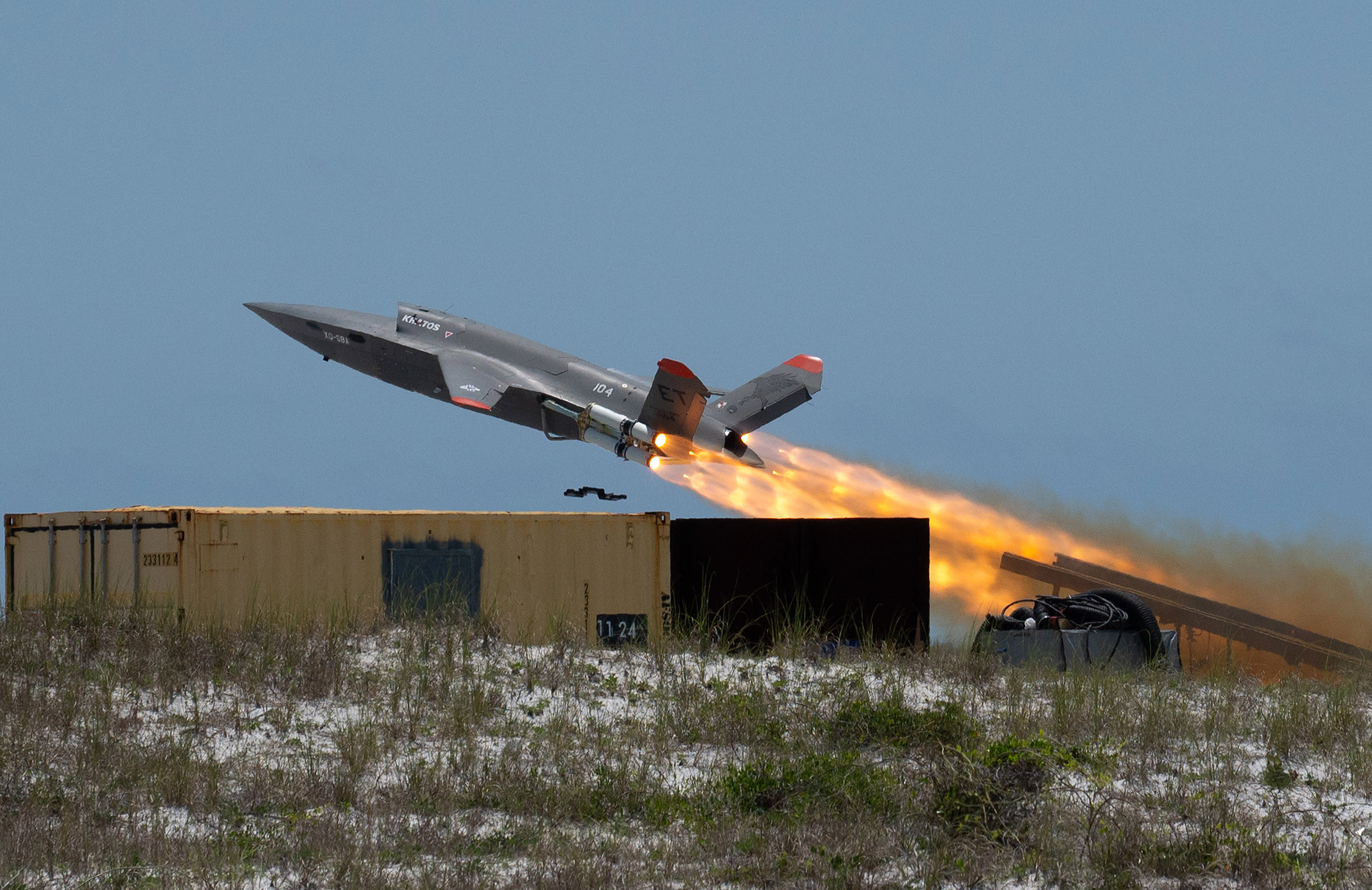Revolutionizing Aerial Warfare: The Rise of Drone Integration in Air Combat Training
 The Tech Times
The Tech Times
In an era where technological advancements are reshaping the global landscape, the integration of drones into air combat training by fighter pilots marks a pivotal moment in military aviation. The United States Air Force's recent initiative to employ drones in a "loyal wingman" role signifies a major leap forward in human-machine collaboration, heralding a new chapter in aerial warfare.
The Evolution of Air Combat
The concept of incorporating unmanned aerial vehicles (UAVs) into military operations is not new. Historically, drones have served various roles, from reconnaissance to targeted strikes. However, their integration as partners in air combat training is a relatively recent development with profound implications.
The idea of a "loyal wingman" is rooted in the history of air combat, where pilots relied on wingmen to provide support and fulfill tactical roles in complex operations. Traditionally, these wingmen were fellow pilots flying separate aircraft. Today, with drones stepping into this role, the dynamics of air combat are poised for dramatic transformation.
The Technological Leap
The Air Force's announcement of this new training paradigm underscores the rapid technological progress in the field of autonomous systems. Drones, equipped with advanced sensors and artificial intelligence, can now operate alongside human pilots, augmenting their capabilities and enhancing mission success rates. This human-machine teaming enables more efficient decision-making and expands the strategic options available to military commanders.
The "loyal wingman" concept involves drones flying in coordination with manned aircraft, providing critical support such as surveillance, target acquisition, and even engaging enemy threats. This not only reduces the risk to human life but also allows for more flexible and adaptable mission profiles. The seamless integration of drones into air combat training programs is a testament to the evolving synergy between human intellect and machine precision.
Historical Context and Milestones
The journey towards this integration has been marked by several significant milestones. The use of UAVs gained prominence during the early 21st century, particularly in conflicts such as the wars in Afghanistan and Iraq. These early drones primarily served reconnaissance and targeted strike roles, providing invaluable data and reducing the risk to human soldiers.
However, the shift from reconnaissance to active combat roles required substantial advancements in technology and strategy. Breakthroughs in AI and machine learning have enabled drones to operate more autonomously, making real-time decisions and executing tasks with minimal human intervention. This evolution is a clear reflection of the increasing reliance on technology in modern warfare.
Implications and Future Prospects
The integration of drones as "loyal wingmen" holds significant implications for the future of aerial combat. This development not only enhances the effectiveness and safety of military operations but also sets the stage for further advancements in autonomous systems. The potential for drones to take on more complex roles, such as electronic warfare or logistics support, is vast and largely untapped.
As militaries around the world continue to explore the capabilities of drones in combat scenarios, the nature of warfare itself is likely to evolve. The days of traditional dogfights may give way to a new era where human pilots and autonomous systems work in harmony to achieve objectives with unprecedented precision and efficiency.
Conclusion
The Air Force's initiative to train fighter pilots alongside drones marks a watershed moment in military aviation. This integration represents not only a technological leap but also a strategic evolution in how air combat is conducted. As we move forward, the partnership between humans and machines will undoubtedly continue to redefine the boundaries of what is possible, ensuring that the skies remain a domain where innovation and ingenuity reign supreme.
Source: Fighter pilots integrate drones into air combat training
Subscribe to my newsletter
Read articles from The Tech Times directly inside your inbox. Subscribe to the newsletter, and don't miss out.
Written by
